
New Responses to the "New Normal"
cross-posted from New Economy Transtion
 New England has a long tradition of radical communitarian culture. The colonists came here as congregations or communities rather than as individuals. Communities banded together into state parliaments here and laid the groundwork for the American Revolution. The region has a tradition of social change, moral crusades and entrepreneurial invention which provides its unique character. It is no wonder that today New England is home to many thriving grassroots Transition and resilience groups. Our region has already organized three region-wide gatherings to share stories, lessons, inspiration and more, bringing together over 200 people from 50 communities and all six New England states.
New England has a long tradition of radical communitarian culture. The colonists came here as congregations or communities rather than as individuals. Communities banded together into state parliaments here and laid the groundwork for the American Revolution. The region has a tradition of social change, moral crusades and entrepreneurial invention which provides its unique character. It is no wonder that today New England is home to many thriving grassroots Transition and resilience groups. Our region has already organized three region-wide gatherings to share stories, lessons, inspiration and more, bringing together over 200 people from 50 communities and all six New England states.
While Transition and other grassroots groups focus on the vital task of local resiliency, it is becoming clear to many of us that the demands of our time, and the transition now unfolding, also require us to think regionally. What follows is an attempt to sketch out a rationale for thinking at a regional scale — as opposed to only the local, national, and global ones we are more accustomed to.
This document is offered in the spirit of provoking reflection and as a springboard for further discussion. We hope it sets the stage for a deeper dive into the ideas of regional resilience. We also hope it serves as an invitation for us all to collectively imagine the kind of region where we, our children, and our grandchildren, can grow and thrive.
“New Normals” and New Responses
Our lives are currently lived within a global economic system that is unjust and unsustainable. Those of us involved in the Transition effort, along with many others in our region, understand that we are living in, and must respond to, an era of “new normals” caused by climate change and deepening ecological, economic and political crises.
It is clear that the federal government and the other institutions of the past are incapable of the innovation and adaptation needed to even address the most pressing issues we face. As community groups and regional activists, we need to pioneer our own path and lead by doing.
Why a Regional Response is Necessary
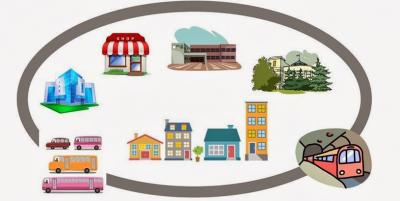 Citizens can have the greatest impact closest to home through community-based, local action. The Transition movement, and many others, honor the principle of subsidiarity, which means that action should always be taken at the smallest, most local level possible. To this end, Transition, sustainability and resilience initiatives have created community gardens, community educational opportunities, local transportation improvements, local currencies, and much, much more. Now, some Transition activists are wondering if we should take the principles of re-localized communities and apply them to re-localizing New England.
Citizens can have the greatest impact closest to home through community-based, local action. The Transition movement, and many others, honor the principle of subsidiarity, which means that action should always be taken at the smallest, most local level possible. To this end, Transition, sustainability and resilience initiatives have created community gardens, community educational opportunities, local transportation improvements, local currencies, and much, much more. Now, some Transition activists are wondering if we should take the principles of re-localized communities and apply them to re-localizing New England.
The leap to regional thinking is happening for many reasons:
We recognize that none of us is resilient until all of us are. Equity and social justice are intrinsic to true resilience. Gated resilience that is only for the well-off may break down when neighboring towns and less privileged individuals seek to get basic needs met under challenging conditions. Both pragmatically and morally, we are profoundly interconnected with each other, and we recognize our obligations to be good neighbors both within and beyond our communities.
We are nested in large systems of culture, climate, and exchange, and many life-sustaining systems are larger-than-local. Sometimes it is not possible to effect change at the local level, so the principle of subsidiarity leads us to work at the next scale. We find that our drinking water is managed regionally, and so is energy production, waste management, and many of the “invisible” aspects of our lives. Rejuvenating the health of bio-regions that cross municipal and state boundaries is essential if we are to sustain the resources we need for our well-being and the biodiversity that fills us with awe and wonder.
A regional economy strikes the best balance between efficiency and resilience, and could circumvent the injustices of the global political-economy. We know that regional trade played a role in many low-energy, pre-industrial cultures to meet needs that cannot be met locally. Producing things within New England — rather than across the globe — reduces carbon emissions, makes us less vulnerable to energy shortages and price spikes, and produces local jobs and forms of livelihood. You might be amazed at how much is made and nurtured in New England. We urge everyone to start wondering: what might we stop importing from afar and start producing within our region?
Many New Englanders are also eager to withdraw from the global political-economy for moral reasons. This economy is based on a model of extracting wealth from the poor and transferring it to the rich, and many of us find this morally abhorrent, as well unsustainable.
A regional decision-making system is more accountable than a large national one. In our national political system, the average citizen’s voice is simply inaudible. We can have much greater impact at a smaller scale, and participate more fully in the decisions that affect our lives. New England’s communitarian history also supports a human scale decision-making system.
Why New England?
Many of us already lead regionally-based lives and feel some connectedness to “New England” as a whole. Depending on whether we are recent immigrants or have deep New England roots, we feel different levels of cultural affinity to this region. For some of us, our relatives are scattered throughout New England, we may regularly vacation Down East or on The Cape or in the Green Mountains, or we may have taken a meandering life-path that moved us from Boston to Maine to Rhode Island. Many of us even commute regionally to work. Our sports teams are another bond that helps knit us together (New England Patriots, Red Sox Nation).
We do recognize that working within the region of New England is somewhat arbitrary. The political boundaries of New England consist primarily of three “eco-regions” (the Northeastern Highlands, the Northeastern Coastal Zone, and the Acadian Plains and Hills). New England does not align with a single foodshed, watershed, or other natural designation. There is a good argument to consider a larger North East Region (inclusive of New York state, and parts of Canada) composed of smaller bio-regions. However, New England seems a handy starting point for a conversation, given the Transition gatherings that have already been held and in light of its established political identity. This discussion is in its infancy, and all options are worthy of more reflection and discussion.
Key Dimensions of Regional Resilience
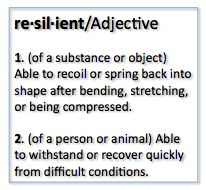 As mentioned above, this list is offered in the spirit of provoking reflection and as a springboard for further discussion, and is not meant as definitive or comprehensive. The drafting team highlights questions about ten key dimensions that we have given some thought to, but there are surely others we have missed which you may want to add.
As mentioned above, this list is offered in the spirit of provoking reflection and as a springboard for further discussion, and is not meant as definitive or comprehensive. The drafting team highlights questions about ten key dimensions that we have given some thought to, but there are surely others we have missed which you may want to add.
1. Skills, Livelihoods, and Knowledge - Challenges posed by “the long emergency” require different habits of mind than the past two hundred years, and new skills and forms of education. Many “high skill” crafts of the past have been devalued in our fossil-fueled industrial age, and the number of expert craftspeople has severely dwindled, along with their accumulated knowledge. For example, growing food is no trivial task, especially in a changing climate, and requires new forms of ecological agriculture suited to the landscape. How do we choose to re-skill ourselves to respond to the coming changes? How do we help our children learn skills useful to the world they will inherit? How do we foster experimentation and unleash innovation toward the new economy transition.
2. Manufacture – To stop importing goods from afar and establish a regional economy, New England will need to start producing its own supplies. Can we build our own wind turbines and solar panels? Who are the garden & farm tool manufacturers? Who makes nuts and bolts and building supplies?
3. Financial/Monetary - While the problems with the global financial casino are vast, we know that we will need to mobilize some recognized version of wealth and savings to be invested in a new infrastructure. This will allow us to make the transition to renewable energy while creating new jobs and businesses. A parallel or at least insulated regional monetary system would buffer us from the shocks of continued global financial collapse while facilitating trade within the region. State banks, like the one in North Dakota, proved particularly resilient in the last Wall Street crash and helped buffer the state from negative impacts. What interrelated financial system can we imagine in New England? How could we facilitate the coordination needed to support that effort?
4. Governance & Decision-Making - We know the corporate-capture of the federal government has led to national stalemate and stagnation. However, leadership and innovation is happening at state and local levels (albeit unevenly). Most of us remain alienated from supposed “democratic” institutions, and are unable to find ways to make our voices heard as participants in shaping our destiny. Historical boundaries of government often have no connection to eco-regions, and cross-boundary pollution of shared resources poses huge challenges for bureaucratic agencies unable to operate outside their jurisdictions. Can we carry forward the values of the American Revolution and renew a grassroots democracy rooted in liberty, justice, equality and freedom? As we organize our own movement, creating a regional network linking local initiatives, we create the seeds of future governance. We must keep alive within our work the values of transparent, accountable, and inclusive decision-making.
5. Transportation - Our region has the advantage of pre-car settlement patterns – we have ports still in use, waterways once used for moving goods and the potential to re-construct rail systems with sustainable rolling stock. Transit infrastructure could help knit our communities together, allowing tool manufacturers in Massachusetts and Connecticut to supply farmers in Vermont and Maine. In reverse, it allows these farmers to bring their food to urban markets. Coordinating land-use laws across different state jurisdictions is one of many challenges to rebuilding a robust non-fossil fuel dependent system of transportation.
6. Food - Food Solutions New England has shown that 70% of our food could be produced within New England. In this vision, a substantial portion would be grown in small lots in cities, suburbs, and towns. Already, New England farms produce half of our dairy. The Champlain Valley was once the breadbasket of New England, and the Erie Canal was built to bring the grain from central NY state to the cities. Could we return to such a food reality? What are our visions for local and regional food production? What is the value-added of New England agriculture, what should be its focus in a resilient region? As we transition away from the industrial model of agriculture, what new infrastructure is needed? For example, slaughterhouses and meat markets closer to cities might be needed. What opportunities for re-skilling and new forms of livelihood emerge?
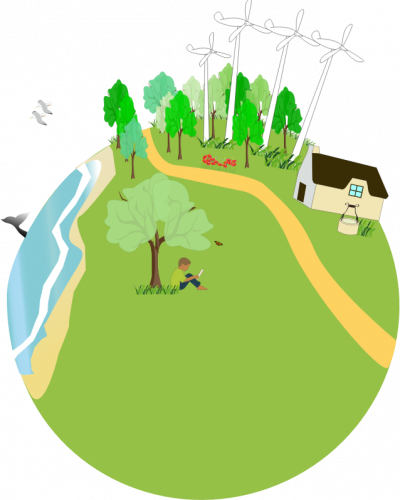 7. Energy - Some experts claim that New England has the potential to become completely self-sufficient through renewable energy production. Decentralized energy systems can be combined with larger publicly owned existing hydro-power and new off-shore wind developments to provide basic power to the region. Maximizing off-shore wind turbines alone would enable production of surplus energy that could be sold back to the national grid to recoup the costs of their construction. Models of cooperative community ownership, such as what has been achieved in Europe or more recently in Boulder, Colorado, or more locally in Scituate, Massachusetts, would strengthen local communities rather than large corporations. Net Zero New England will be difficult, but we need to get there eventually. Shouldn’t we start now?
7. Energy - Some experts claim that New England has the potential to become completely self-sufficient through renewable energy production. Decentralized energy systems can be combined with larger publicly owned existing hydro-power and new off-shore wind developments to provide basic power to the region. Maximizing off-shore wind turbines alone would enable production of surplus energy that could be sold back to the national grid to recoup the costs of their construction. Models of cooperative community ownership, such as what has been achieved in Europe or more recently in Boulder, Colorado, or more locally in Scituate, Massachusetts, would strengthen local communities rather than large corporations. Net Zero New England will be difficult, but we need to get there eventually. Shouldn’t we start now?
8. Equity - While we seek to strengthen our local communities, not all communities have equal or sufficient access to resources to make a successful transition to a new economy. Some communities have more advantages and privileges than others. What are our obligations to help each other? Surely, we are not trying to replicate the grossly unequal system of gated wealth and private security keeping out the poor. We need to ensure that all of us have access to food, housing, health care, and education in the New Economy. This is not just a moral obligation, but is also in our self-interest; our resilience is stronger when everyone is healthy and people’s skills and talents are not going to waste.
9. Decreased Consumption – The current economy relies on economic growth, requiring ever-increasing extraction of Earth’s resources and an insatiable consumption of products and services, many of questionable use. Additionally, the primary objective of this economy is wealth accumulation for a global minority, where profit is based on the exploitation of the labors of the majority. By contrast we envision an economy that serves all people rather than people serving it to benefit few, where development and growth concerns humanity, all species, and Earth’s well-being. In a sustainable and just economy people engage in cooperative ownership of the means of production for enhanced sharing of needed goods and services for happiness and survival.
10. Climate Migrants - New England is blessed with many natural and cultural assets that will aid its transition to a new economy. Other regions are far more susceptible to greater disruptions such as droughts and flooding. What are our moral obligations to our brothers and sisters struggling to make a life in these areas? “Climate migrants” from abroad and from parts of America are already arriving in New England – and we can expect their numbers to increase as the world grows increasingly chaotic. How could we prepare to incorporate these and more new immigrants into our region? How do we have a democratic discussion about how to respond when chaos increases around the country?
Go to the GEO front page

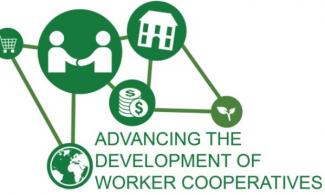
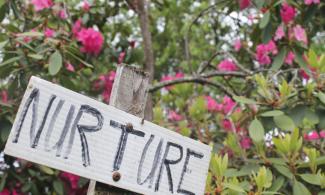
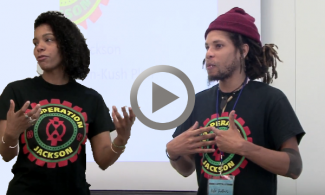
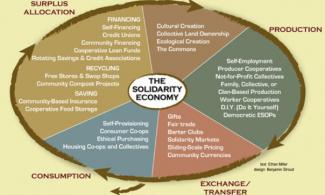
Add new comment